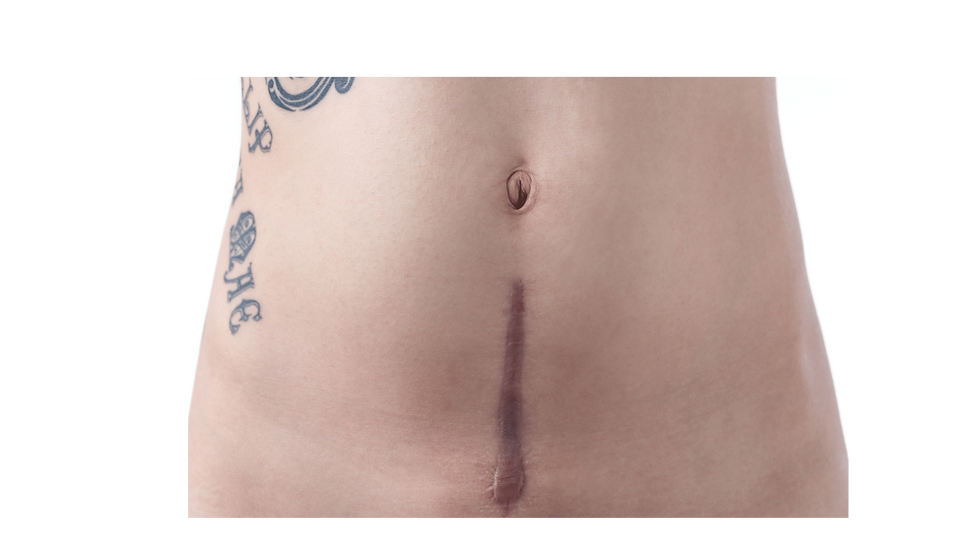Endometri-oh-no-she-didn’t….
- elaynegeba
- Mar 21, 2022
- 3 min read

March is Endometriosis Awareness month and what better time to once again jump on my soapbox!
Endometriosis is a condition where the tissue that is similar to the tissue which lines the uterus (endometrium) finds its way outside of the uterus and causes inflammation and scar tissue on the surrounding organs and tissues such as the pelvic peritoneum, ovaries, fallopian tubes, bladder, rectum and bowel. In very rare cases, it can be found as high up as the diaphragm, stomach and lungs.
Hormones like Estrogen can affect the endometriosis causing it to grow and produce chemicals which cause inflammation of the tissues and an increased nerve supply to the tissues - all of which can cause pain. And because endometriosis can create its own estrogen, it can cause pain not only during your period, but at all times of your cycle.
Endometriosis pain is also exacerbated by how little space there is in the pelvic cavity. When you add more tissue (the endometriosis itself), the inflammatory cells, the increased nerves, the cells trying to stop the inflammation, the scar tissue that is caused by the endometriosis and the tight, spasming pelvic muscles that are trying to guard and protect the area- you get a recipe for lots of pain, bowel and bladder issues.
The most common symptoms of endometriosis are dysmenorrhea (very painful periods), non-menstrual pelvic pain, and dyspareunia (pain with intercourse). Endometriosis is also commonly associated with fatigue, pain with bowel movements, difficulty fully evacuating bowels,constipation, bloating, diarrhea, bladder urgency, frequency and hesitancy, and pain with bladder and rectum filling.
Most endometriosis is diagnosed by a healthcare provider clinically or based on your symptoms, physical exam and history. But the only way to be 100% sure is through a laparoscopy surgery to examine the pelvic and abdominal cavity with a scope. However, a lot of physicians try to avoid this if possible because every time they go into the abdominal cavity, they create more scar tissue, which can add to the pain and discomfort. Treatment for endometriosis is often multimodal - meaning lots of different treatments including medications for pain, inflammation, hormone control, and nerve overactivity. Also, dietary and lifestyle changes to decrease systemic inflammation can be helpful. Surgery may be recommended in some cases.
Pelvic floor physical therapy is often helpful in calming down the spasming pelvic muscles, calming down the bladder and bowel dysfunctions, breaking up some scar tissue, helping the organs move better within the pelvic cavity, helping the nerves glide better in the pelvic cavity and just giving more space for everything to work a little better and be less compressed.
OH AND here comes the soapbox! Endometriosis is an “invisible illness or disease”. What in the world does that mean? It means it causes pain, a lot of pain, and pain that makes everyday activities very hard or impossible to accomplish including work and child care and taking care of your home. BUT - they are invisible because most people won’t see the pain inside their body. They may look fine on the surface, but again, much like the iceberg there is dysfunction deep in the body. They often aren’t limping or using crutches. They aren’t screaming out loud when they twist or bend. But they are often screaming inside and just trying to hold it all together. A lot of my patients with endometriosis wish at times they could just put a giant red X over their abdomen, pubis, buttock, tailbone or perineum so people would know they are trying their best while managing a chronic pain condition. Over time, chronic pain can also lead to depression and anxiety, two other issues you can’t see on the outside. It’s a best practice to not judge anyone - you don’t know what they may be going through. If you know someone who has endometriosis or a chronic pain condition, lend them an ear and put yourself in their shoes for a minute. Sometimes they need someone who will listen empathetically.
For the latest on endometriosis research, news and resources, visit www.endometriosis.org.




Comments